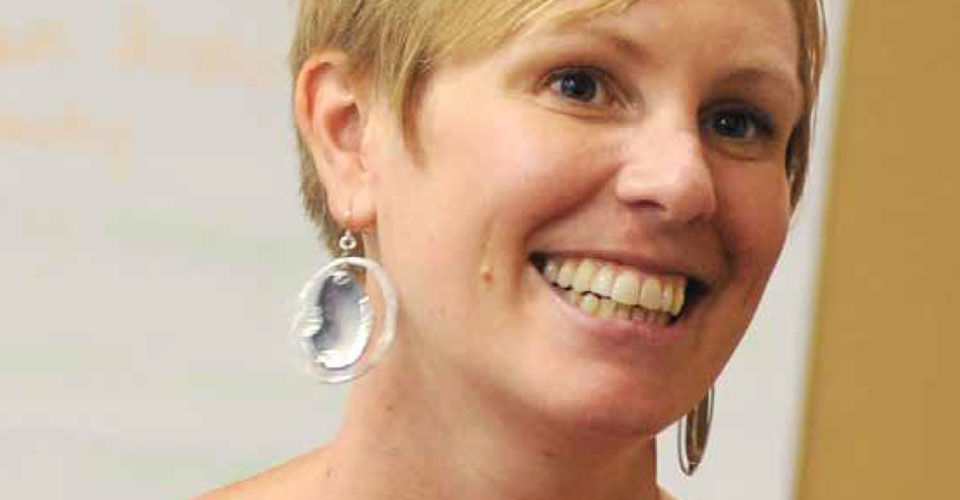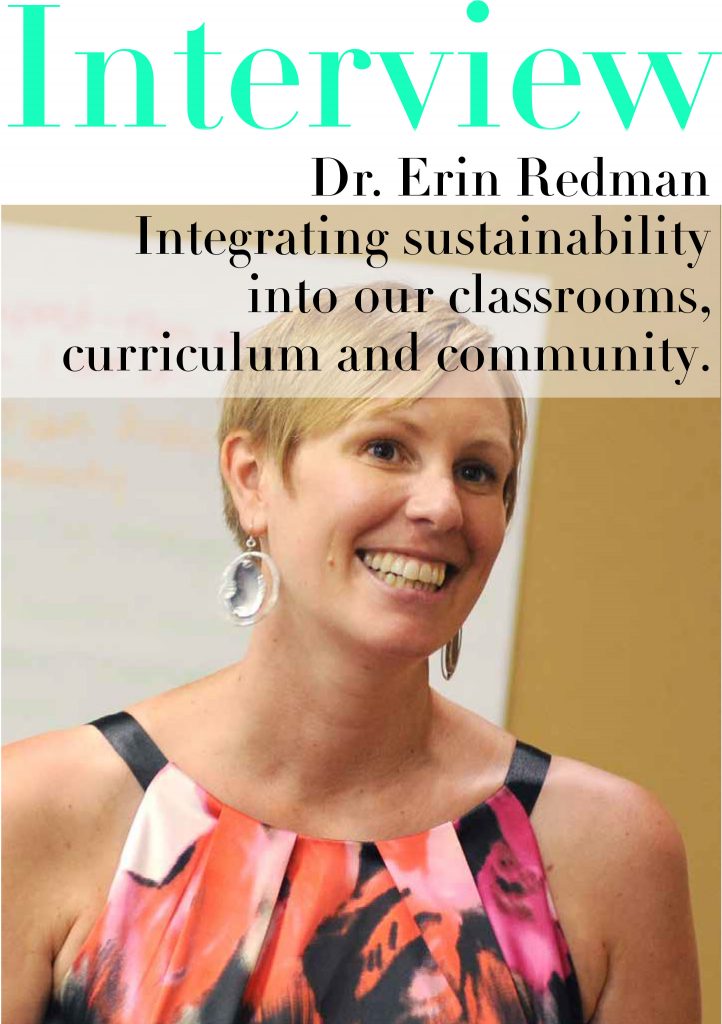

Erin Redman is a sustainability education expert, professor and director of the Educational Sustainability doctoral program at the University of Wisconsin-Stevens Point. Here, she explains to Ellen Tout how educators can model and advocate for sustainability. This interview was first published by the UK environmental charity TRAID and re-posted with permission.
TRAID: How would you define education for sustainability?
Erin Redman: Education for sustainability is by nature, interdisciplinary, solutions-oriented, based in the real world, and focused on empowering learners to lead for positive change. It’s not just the lessons we use, the pedagogical techniques we employ, but also the behaviours we model.
TRAID: In the UK, climate change is part of secondary school Science and GCSE Geography. In your work, you emphasise the importance of going beyond the simple passing on of information. Instead, you talk about four types of knowledge: declarative, how-to, impact and social knowledge. Why is this combination important?
Erin Redman: When you think about climate change, even if a learner understands the science behind CO2 emissions and the enhanced greenhouse gas effect, does that mean that they drive less, eat less meat or consume less? In terms of how-to knowledge, the learner can learn how to reduce their climate footprint through changes in diet, consumption and transportation decisions. When we think about impact knowledge, we can discuss the massive impact the agricultural industry has on the planet and how we can impact industries through our purchases, which shape the landscape, environment and people on it. Finally, social norms are really the key driver of behaviours. Social norms are a type of knowing, akin to placebased knowledge, local knowledge and cultural knowledge. Social knowledge is a lens for viewing the world, based on signals and cues around us. While all four of these knowledge domains are important in different ways, in my research I found that social knowledge is the only one that is critical across a large array of behaviours – from composting to eating less meat, and more.
TRAID: What do you think about the school climate strikes?
Erin Redman: The school climate strikes are incredibly important in sending the message to the youth that they have the power to act and have their voices heard. If we want to empower learners to be agents of change, then we need to listen to their call for action. We want engaged citizenry and we see that in the youth climate strikes.
TRAID: Do you think there are enough opportunities for educators to learn how to deliver education for sustainability? How should we be educating the educators? Is the current system effective?
Erin Redman: The answer to this question is very country dependent. However, in the four countries in which I have worked – Germany, Mexico, Ireland and the United States – educators often rate their knowledge and skills to educate for sustainability as low. If they do not feel confident teaching about a topic, they are unlikely to do so. For many educators I see, there are few requirements to engage in professional development and the quality of that development varies. Even where there are requirements, there are few, if any, offerings on sustainability. One barrier to integrating sustainability across all disciplines is that many educators think that only Science departments should engage in it. In my dream world, all educators in all subjects would feel confident integrating sustainability into their classroom, curriculum and community. We are a long way from that and need many more opportunities for educators.
TRAID: What would you say to an educator who wants to introduce more education for sustainability into their school? How can they start?
Erin Redman: I would suggest looking at one curricular activity and thinking about how to weave sustainability into that one lesson. For example, look at your narratives about people of certain careers and change up the gender descriptors. Gender equity is a critical part of sustainability. If you don’t have time to revisit a lesson plan, model sustainability and make a statement about it at the beginning or end of class. For example, if you are using a reusable water bottle, instead of single-use, make a comment about it. Modelling sustainable behaviours is an excellent first step.
TRAID: What are the barriers to more education for sustainability in schools?
Erin Redman: The misconception that sustainability only belongs in Science classrooms prevents many educators from engaging in the topic. Secondly, the overcrowded agenda and overworked educators. Educators are doing so much, caring for the heads, hearts and hands of young learners. Sometimes it feels like we are just piling on more and more things, without truly recognising all that goes into what they do every day. With the issue of overworking, I think educators are undervalued for their leadership, creativity, innovation and fostering of holistic learning.
TRAID: Which countries are doing well in educating for sustainability?
Erin Redman: It is interesting because Norway is doing well in educating for sustainability. It is investing its ‘oil money’ into education and sustainable infrastructure, so it is a wealthy and small country that is rather forward-thinking. In Italy, they are trying to integrate climate change education systematically into its school system. In Germany, there is a strong focus on competencies, which lends itself to sustainability education because it is a shift away from memorisation and regurgitation.
TRAID: Do learners want more education for sustainability? How can we better serve them?
Erin Redman: Yes, educators see that learners engage in topics that are relevant to their lives. Sustainability (or unsustainability) is all around us. It’s in our grocery stores, our sidewalks and bike lanes, our transit infrastructure, our housing developments.
TRAID: What one small tweak could an educator make to impact their classes?
Erin Redman: Educators are role models and change agents every day. You can educate for sustainability through cycling to school, using a reusable water bottle, wearing second-hand clothes (and proudly commenting on that fact), using reusable bags and adopting gender-neutral language.
